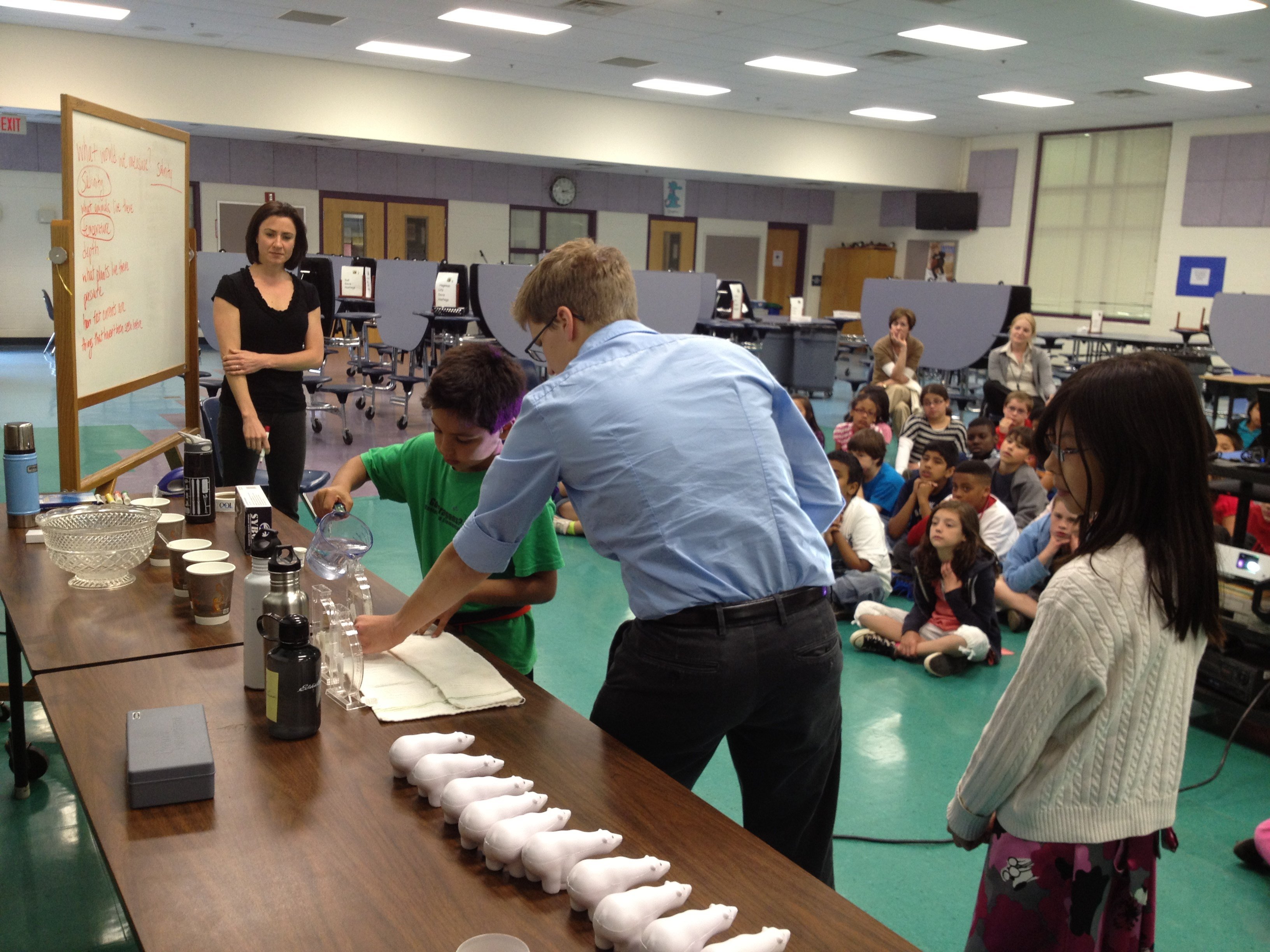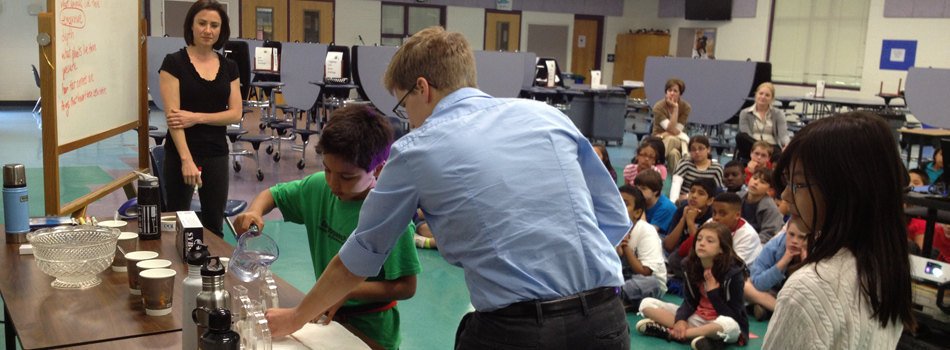Elementary School Students Explore the Ocean With the OOI

(Click to enlarge) Megan Gibney (left) and Leslie Smith (right) of the Ocean Observatories Initiative Program lead students through an experiment to measure ocean properties at a recent outreach event. (Credit: OOI Program Office Communications)
During a recent outreach event at a local elementary school near Washington, D.C., students dove to the deepest depths of the ocean, explored the continental shelves and learned about data collection with the Ocean Observatories Initiative (OOI).
Though just learning the basics of ocean science in their classroom today, these young students could be the users of OOI data that will be available for a 25-30 year plus time period. The idea of learning about the deepest depths of the ocean and using robotic instruments to collect scientific data on the ocean seemed to fascinate the young ocean enthusiasts who had more than enough questions of their own.
Leslie Smith, a University of Rhode Island Graduate School of Oceanography alumnus who works in communications for the OOI Program at the Consortium for Ocean Leadership, gave the 100 students attending the event an overview on the global oceans as a start to their ocean science curriculum for this year and an introduction to the OOI. She encouraged the young audience that they too could someday become oceanographers if they work hard at their math and science now.
Linking the real world to the classroom, the presentation focused on highlighting many state-mandated standards of learning as a preview to provide interesting examples of concepts from someone who works in the field. The students were particularly impressed when Smith showed a Styrofoam cup that had been sent down 1,000 meters in the Sargasso Sea causing it to be shrink to about a quarter of its original size from the pressure of the dive.
The students also participated in a hands-on data collection and measurement experiment to get a real feel for what information and data products will be available with the OOI. The students measured some ocean parameters, including temperature and salinity, from water samples using real scientific equipment. They then worked together to consider what the measurements meant and draw conclusions of their own.
“Inquiry based learning is very important,” Smith said. “You need to let the kids ask questions, you need to let them use their imagination to think about what they are seeing. It’s good not to have a set answer that the kids are trying to figure out, but rather to teach the kids how to ask questions and give them the chance to be creative about their answers.”
Smith explained that the OOI will provide massive amounts of information about the ocean and that it will be all free and accessible on any computer.
“Sharing my love of the oceans with children is inspiring,” Smith remarked. “Seeing the wonder in their faces, listening to their ideas and questions. It reminds me why I study the ocean – because it is fascinating. There is so much left to be discovered and the OOI is going to open new avenues of exploration for future researchers, maybe even a student in the room here today.”
The OOI, a National Science Foundation-funded program, is one integrated infrastructure of science-driven systems to measure the physical, chemical, geological and biological variables in the ocean and seafloor on coastal, regional and global scales. The OOI will put real-time ocean observing data in the hands of a vast user community of oceanographers , scientists, educators and the public. Anyone with an Internet connection will be able to access the OOI data.
This outreach event is one of many taking place across the OOI program as program scientists and engineers reach out to educators and students in various communities. Later this month the OOI will participate as part of a larger Consortium for Ocean Leadership exhibit at the USA Science & Engineering Festival in Washington, D.C., on April 28-29. Those attending that event will get the opportunity to explore with the OOI and try out these hands-on experiments for themselves. Click here for more information on that event: www.usasciencefestival.org.
To learn more about the OOI please continue to visit the OOI Website and OOI Facebook and Twitter accounts for event coverage.

